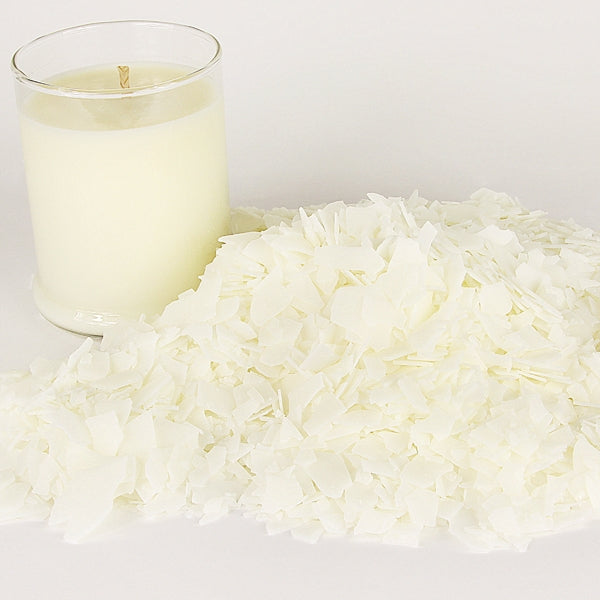Illuminate Your Atmosphere with Crystal Soy Candles and Home Fragrance
Wiki Article
From Wick to Wax: Understanding the Chemistry Behind Soy Wax Candles and Their Ecological Influence
As we brighten our spaces with the cozy radiance of candles, there exists a world of detailed chemistry behind the relatively straightforward act of lighting a soy wax candle. Join us as we unravel the scientific intricacies behind soy wax candles and discover their implications on our environment.Soy Wax Vs. Paraffin Wax
When contrasting soy wax and paraffin wax for candle production, it is important to recognize the distinctive attributes and advantages of each material. Soy wax is a natural, sustainable resource stemmed from soybean oil, making it environmentally friendly and eco-friendly - soy wax candles. On the other hand, paraffin wax is a by-product of petroleum refining, which raises worries about its ecological impact and sustainabilitySoy wax candles melt cleaner and give off less residue compared to paraffin wax candle lights, making them a healthier selection for interior air quality. In addition, soy wax has a lower melting factor, allowing for a longer-lasting candle that distributes scent much more successfully. Paraffin wax, on the other hand, tends to shed faster and less cleanly, possibly releasing damaging chemicals right into the air.
From a sustainability viewpoint, soy wax is favored for its biodegradability and eco-friendly sourcing, straightening with the expanding customer choice for environmentally conscious products. While paraffin wax has been a standard option in candle making as a result of its price and simplicity of use, the shift towards eco-friendly choices like soy wax is obtaining momentum in the market.
Chemical Composition of Soy Wax

Combustion Refine in Soy Candles
The chemical composition of soy wax straight influences the combustion process in soy candles, influencing variables such as melt time, scent launch, and environmental impact. When a soy candle is lit, the heat from the fire thaws the wax near the wick.
The burning effectiveness of soy candle lights is influenced by the pureness of the soy wax and the top quality of the wick. Additionally, soy wax candle lights have a reduced environmental influence compared to paraffin candle lights due to their biodegradable and eco-friendly nature.

Ecological Advantages of Soy Wax

Taken into consideration a sustainable option to conventional paraffin wax, soy wax supplies significant environmental advantages that make it a popular option among eco-conscious customers. Soy wax burns cleaner and produces much less residue than paraffin wax, adding to better interior air quality and decreasing the requirement for cleaning and maintenance. In general, the ecological benefits of soy wax align with the expanding demand for environment-friendly and lasting items in the market.
Recycling and Disposal Considerations
Reusing and proper disposal of soy wax candle lights play a critical function in maintaining ecological sustainability and decreasing waste in homes and areas. When it involves recycling soy wax candle lights, the initial step is to ensure that the candle light has actually burned entirely. This can be attained by enabling the candle to shed up until the wick is no much longer usable, and afterwards allowing the staying wax cool and solidify. Once the wax has actually solidified, it can be carefully gotten rid of from the container.
In regards to disposal, if recycling is not an option, soy wax candles are biodegradable and can be safely disposed of in a lot of family waste systems. Nevertheless, it is always advised to talk to local recycling facilities or waste management services for details guidelines on candle disposal to make sure correct handling and ecological security.
Final Thought
Finally, the chemistry behind soy wax candle lights reveals their environmental advantages over paraffin wax candle lights. Soy wax, originated from soybean oil, burns cleaner and creates less soot when compared to paraffin wax. The burning process in soy candle lights is a lot more effective, resulting in a longer and more even burn. In addition, soy wax is naturally degradable and eco-friendly, making it an extra lasting choice for home fragrance candle manufacturing. Recycling and proper disposal of soy wax candles further add to their environmental influence.When comparing soy wax and paraffin wax for candle light production, it is important to recognize the unique features and advantages of each product (home fragrance).Soy wax candles shed cleaner and release much less residue compared to paraffin wax candle lights, making them a healthier selection for interior air high quality.Taken into consideration a sustainable option to typical paraffin wax, soy wax provides noteworthy ecological advantages that make it a prominent selection among eco-conscious consumers. Soy wax burns cleaner and generates much less soot than paraffin wax, adding to much better interior air quality and minimizing the demand for cleansing and maintenance.In conclusion, the chemistry behind soy wax candles reveals their environmental advantages over paraffin wax candle lights
Report this wiki page